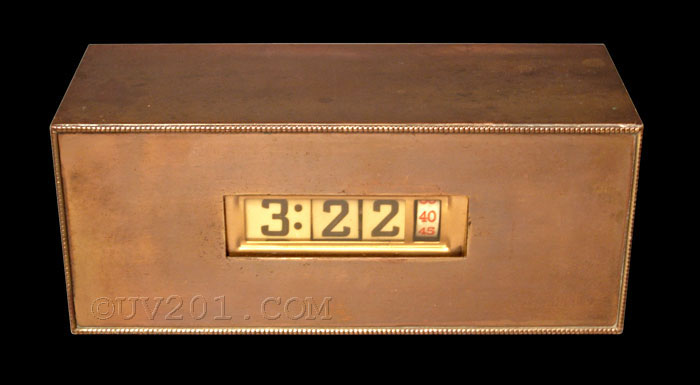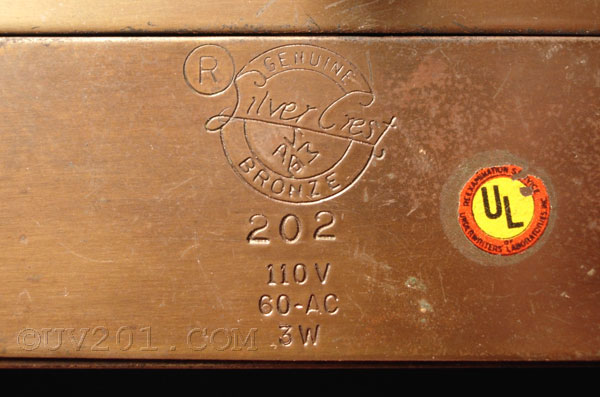|
Lawson Model 202 Bronze Cased Clock |
 |
| This is a model 202 clock
made by Lawson Time of Alhambra, California. As with all other Lawsons, this clock
uses the Pennwood movement.
I believe it dates to the late 1930's. On the back it is marked "Genuine Silver Crest Bronze", and the number "202", which is consistent with the three-digit numbering scheme that Lawson used. Lawson marked their clocks in various ways. Some had metal nameplates that were riveted on, some used glued-on paper stickers. Most (if not all) had tiny "Lawson" decals that were located in the window in the front. This clock has had the movement replaced, so the decal is missing. The earlier metal-cased Lawson's (such as the Zephyr) do not have the Silver Crest mark nor, obviously, did any of the wood-cased Lawsons. Silver Crest was the trade name used by the Smith Metal Arts Company. Smith grew out of the Heintz Art Metal Shop of Buffalo, NY. Heintz was a producer of decorative metal work, often bronze with silver overlay, and was an important player in the Arts and Crafts movement of the early 20th century. Otto Heintz died in 1918, and the following year, the Heinz head salesman, Fred Smith, left over concerns for the future of the Heintz company. When he left, he took a number of the Heintz craftsmen, and founded his own company, which he named after himself. The Smith company's product line grew to be more diverse that that of Heintz, and was able to survive the onset of the Depression, which forced Heintz to close its doors in 1930. Smith produced a line of desk accessories that were sold through jewelry stores throughout the country, an example of which (a bronze Art Deco pen holder) is shown elsewhere on this site. The company flourished as they expanded into the high-end office furniture and accessories market. In 1986, Smith bought the McDonald Products Company, a former rival. The company continues today as the Smith McDonald Corporation. I have been told that Lawson used a nearby metal fabricating and finishing company to make their clock cases. I would propose that, at some point during the 1930's, they sought another fabricator, one that could meet their increasing volume requirements. In choosing Smith, they also tapped into an existing distribution network that could put their products into upscale stores. Lawson began as a family owned company, and it appears to have faded from the scene about the time of WW-II, and I am told that the business was sold to another company. It is possible that it was Smith that bought Lawson. If so, this could explain the existence of the two oddball GE/Telechron models (the 8B22 and 8B23) that were sold in the late 1940's. Though they bore the GE and Telechron names, they are clearly Lawson clocks. The GE 8B22 was also sold, with a bronze finish, as a Lawson 500. |
 |
| The Silver Crest mark as it appears on the back of the clock includes the letters "SMACo", which stands for Smith Metal Arts Company. |